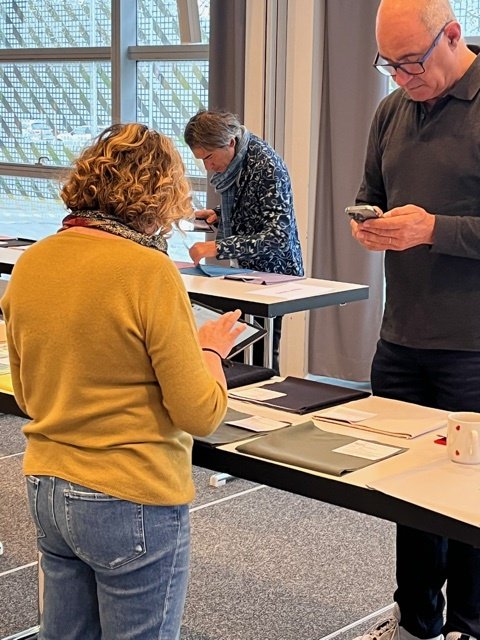
Transparency and responsibility are important factors in this development. But what counts most for the finished product is traceability in all areas of the supply chain - from the sustainability of materials to water conservation to social responsibility in production.
The ISPO Textrends jury meeting wasn't just about the product itself or a heightened sense of sustainability in textile production, but also what the end-of-life of a fabric looks like. According to jury member Giusy Bettoni from CLASS, a question we should ask ourselves more often.
Louisa Smith is a globally recognized textile and fashion expert. Her innovative spirit and expertise make her a sought-after opinion leader in the textile industry - also in the sports and outdoor sector. She is a leading member of the jury for the ISPO Textrends Awards and presents them once a year at ISPO Munich. Louisa Smith will also be supporting the ISPO Award team with a sustainability check and examining the sustainability claims of relevant products - for more transparency and real change in the world of sports. For ISPO.com, she looks at innovations and trends in the industry in her column Tex-Bites.
At the jury meeting, many fabrics not only caught the eye visually, but were also convincing in terms of feel: brands seem to have understood that wearing comfort is above all else.

What was striking about the assessment of the substances? That there were no conspicuous features. The developments of the fabrics compared to the last jury meeting were subtle, the messages of the brands were clear and the focus on material and feel was evident.
This is where the direct impact of global instability, rising costs of living, financial roller coaster rides, war and climate change, to name a few factors, can be seen. And so manufacturers have focused on the essentials: great products that are sustainable, promise performance and safety.
This season's products are not flashy, they are subtle, with sporty nuances and interesting but unobtrusive ingredients.
"I've noticed that the mood of the products is a little 'back to basic,' which is not a bad thing. I think the accents are interesting, but we're going back to basics for more calm and security in uncertain times," says brand designer Thomas Håkansson.
"Some of the best products I've seen are mono-materials. One material for everything to achieve the performance needed for sports applications. This is a strong trend," says Braz Costa of CITEVE.
Also catching his eye positively were the messages from the applicants*. "The future belongs to transparency and the fight against greenwashing. The industry needs to find the right moment to achieve economic and global stability," says Braz Costa.

Despite the subtle changes, there were interesting developments, whether biodegradable rubber or a new woven fabric using merino wool in the warp and weft.
Other noticeable innovations included microencapsulated natural ingredients, mineral dyes, the use of waste, such as from the food industry or car tires, and interesting developments in new natural ingredients.
The jury members' demands on the sustainability of the fabrics are high. As the members bring extensive expertise in a wide range of areas of the textile industry, the submissions are put through their paces and lively discussions take place.
For each submission, points are awarded for the various evaluation criteria. But the product as a whole is also considered. Fabric developments must be well thought out and not lead to contradictory results because, for example, a combination of high-quality ingredients is used that are each sustainable in their own right but do not work together.
Kutay Saritosun from bluesign joined the jury as a new member: "It was very interesting. I discovered some materials I had never seen before."
The award-winning products will also be showcased at the ISPO Textrends Forum at OutDoor by ISPO from June 4-6.
 ISPO TextrendsISPO Textrends Jury Meeting for Spring/Summer 2027
ISPO TextrendsISPO Textrends Jury Meeting for Spring/Summer 2027 ISPO TextrendsSustainable materials: trends fall/winter 26/27
ISPO TextrendsSustainable materials: trends fall/winter 26/27
- Awards
- Mountain sports
- Bike
- Fitness
- Health
- ISPO Munich
- Running
- Brands
- Sustainability
- Olympia
- OutDoor
- Promotion
- Sports Business
- Textrends
- Triathlon
- Water sports
- Winter sports
- eSports
- SportsTech
- OutDoor by ISPO
- Heroes
- Transformation
- Sport Fashion
- Urban Culture
- Challenges of a CEO
- Trade fairs
- Sports
- Find the Balance
- Product reviews
- Newsletter Exclusive Area
- Magazine



